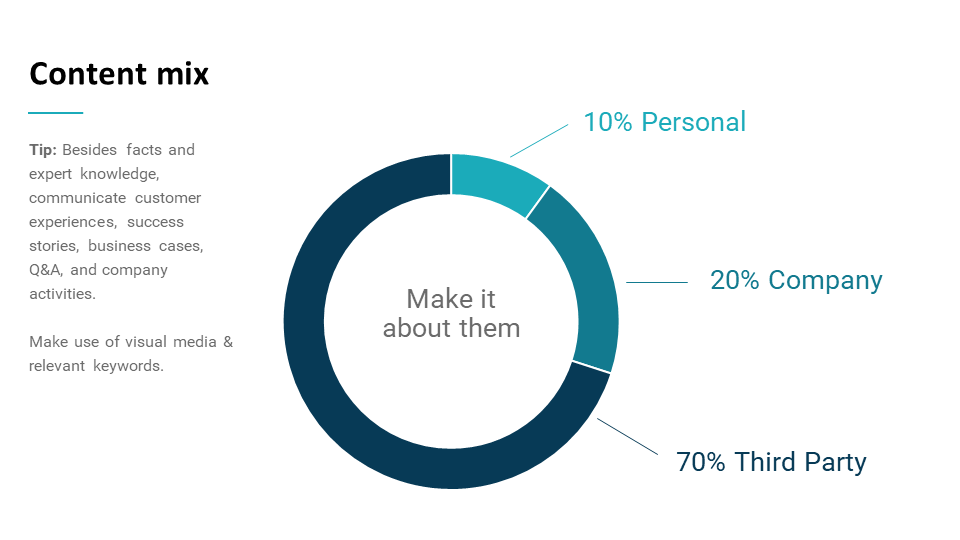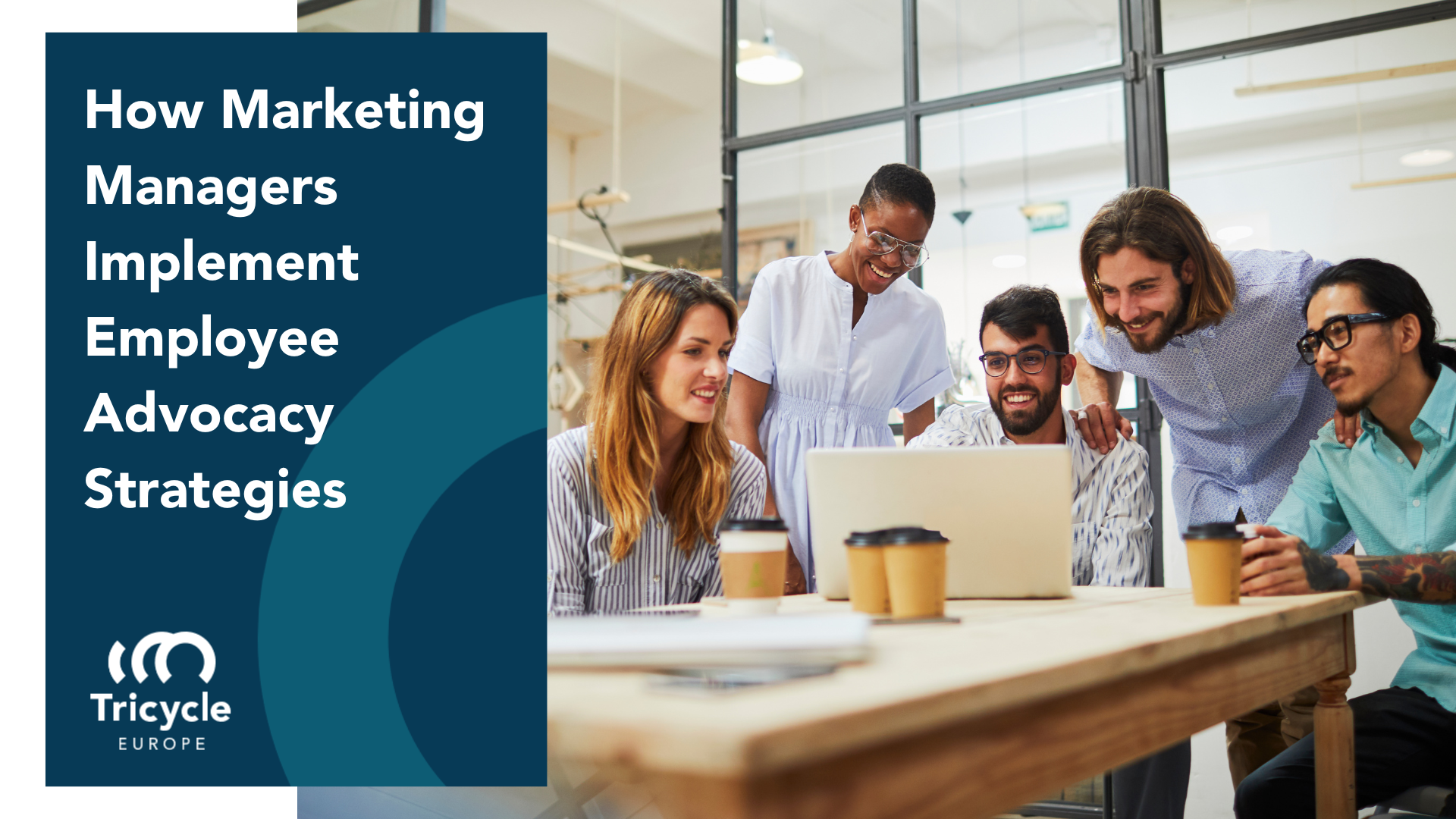An important factor to gain positive results out of your marketing content strategy is your employees. When employees are engaging with the company content, brand awareness benefits from it, which, consequently, generates greater trust in the company brand. That is why we have designed seven best practices to help you develop a successful Employee Advocacy strategy.
Employee Advocacy (EA) is positioned in many cases as a fundamental part of marketing strategies. In fact, when performing a quick search on social media or through any search engine, the results show that it is considered one of the latest B2B marketing trends. Why? Check our latest article about it here.
Ironically, generating engagement with corporate content from employees is one of the biggest challenges. Lack of engagement, and unclear ROI -or lack of urgency- are some of the barriers that marketing leaders need to overcome to successfully implement an Employee Advocacy strategy. After coaching thousands of marketeers, we have collected some of the best EA practices for you to implement in your marketing strategy. Let’s have a look at these seven best practices to help you develop a successful EA strategy.
1. Internal Communication
Employees must be properly informed about what is happening in the company as well as about what their main stakeholders (clients, competitors…) are doing. Eventually, if you want to prepare your employees to be brand ambassadors, they should, at least, be well-informed. Marketing can support employees to have access to relevant, regular, and read-to-share information.
Employees have different needs, challenges and, some of them, different clients. If you want to keep your soon-to-be ambassador’s engagement at a high level, make sure the content adapts to the previous requirements.
Additionally -and due to numerous tools they daily need to manage- it is recommended to share such content in one place. Productivity is valuable for any company. Therefore, the content should be easily accessible on one platform, allowing the employee to share the content as much as possible. As a result, we are maximizing the employee’s time investment in being ambassadors of your brand. Check the end of this article to find out a potential tool that fulfills this need.
2. Be ‘Glocal’
Many global corporations incorporate local channels in their internal global marketing communication. The challenge that some local subsidiaries are facing is finding relevant, tailored, and culturally adapted content that is valuable for the local network. To maintain the value of the content at the local level, the marketing team needs to think and act ‘glocal’ (combining their global mindset with the local strategy).
To start establishing the ‘glocal’ mindset, it is important to employ local content curators that create super relevant content. This content should be tailored and culturally adapted to the end consumer of it. The integration of local social network channels, or sites, can additionally ensure the amplification of the community’s engagement.
Furthermore, internal communication cannot be forgotten. Ensuring that any internal company news is well-communicated, it is crucial that your employees think ‘glocal’ and are aligned to the company’s vision & mission.
3. Content Diversity
It must never be forgotten that your audience and your employees are people with different interests and fields of expertise. Designing diverse content will raise their motivation and interest to engage with the suggested content.
Sometimes, individuals and enterprises tend to overshare company content. Based on our experience, the best distribution to maximize attention is 20% company content, 70% industry-related content, and 10% personal content. In addition to these sharing percentages, remember to combine different formats such as video, pictures, quotes, and much more.

Finally, personalization is a key element in generating engagement with your content. Think about Netflix. Each time you look at the home menu, you see suggested content to watch, which takes personalization to the next level. Getting to know what your employees are interested in and what catches their attention is fundamental to getting them to react to your shared content.
4. Getting the Leadership Team Onboard
According to the well-known Peter Drucker, “Leadership is someone who has followers.” This exact definition gives us a foundation for this important element when developing EA strategies. If the leadership team is fully onboard, engages, and interreacts with your content, employees (followers) will more likely do the same.
5. 360-degree Content
We are fully immersed in the digital era. That means we have access to multiple platforms, channels, and websites from different devices (mobile, computer, tablet, etc.). That creates a need for the marketer to ready content that covers all possible channels and devices so as not to miss any opportunity for the audience to see and engage with the content. Exactly it must happen for the employees.
Ensure that your content is ready to be seen and engaged throughout many different platforms and viewing possibilities.
However, the numerous available channels of communication also play a challenging role due to the too many options that you can find. That is why the next best practice becomes a solution to this challenging factor.
6. Tooling – Gamification
Following the previous steps, the use of a unique platform becomes crucial to achieving the best results when executing an EA strategy. Some of the tools, if not all of them, allow you to incorporate within the strategy a certain gamification component. This can lead you to stimulate the intrinsic motivation of the employee, which is cheaper than offering some external elements such as monetary rewards or promotions. By adding gamification, the employee will generate some inner motivation toward the task because it is fun. Ultimately activating your employees and making them brand advocates, maximizes company marketing results with little investment and increases the level of engagement for the employee.
Several tools in the market can help you to achieve so. However, we would like to recommend Sociabble. It is a fantastic platform that can take your employee advocacy situation to the next level. It allows many possibilities within your strategy. For the sake of the length of this article, you can get to know more about the tool by visiting their website.
7. Professional Coaching
The fundamental component of the EA equation is your employee. Implementing EA strategies requires a change in the human side. That change has two major elements: mindset and behaviour. In order to get employees to share and engage with your content, they must believe in its potential; they must be committed to it. To do this, their traditional mindset needs to be adapted.
To achieve such adoption of the mindset, it is very important to listen to them to understand their needs, challenges, and struggles. The second major element is behaviour. It is not enough that employees are fully convinced to be brand ambassadors if there are no actions afterward. Therefore, a change in their behaviour must happen as well. What really works to trigger behaviour change is to set up weekly goals based on specific actions like sharing or commenting on a certain number of pieces of content.
After having coached more than 40,000 sales & marketing professionals, we concluded that applying professional coaching to trigger the change in the employees and develop their capacity of being brand ambassadors is key to the success of Employee Advocacy strategies.
Changing or creating something new in your digital marketing strategy is not always an easy task. It implies a change of mindset and behaviour as well as having the right tool(s) to make it happen. From our expertise, there are several ways to begin your first steps towards EA. These best practices are just the beginning of its success. Sharing content is effective, but getting your employees to share and engage with your content is where the magic happens.



